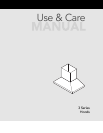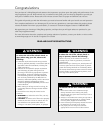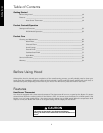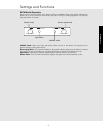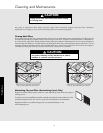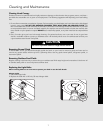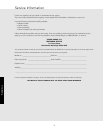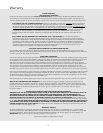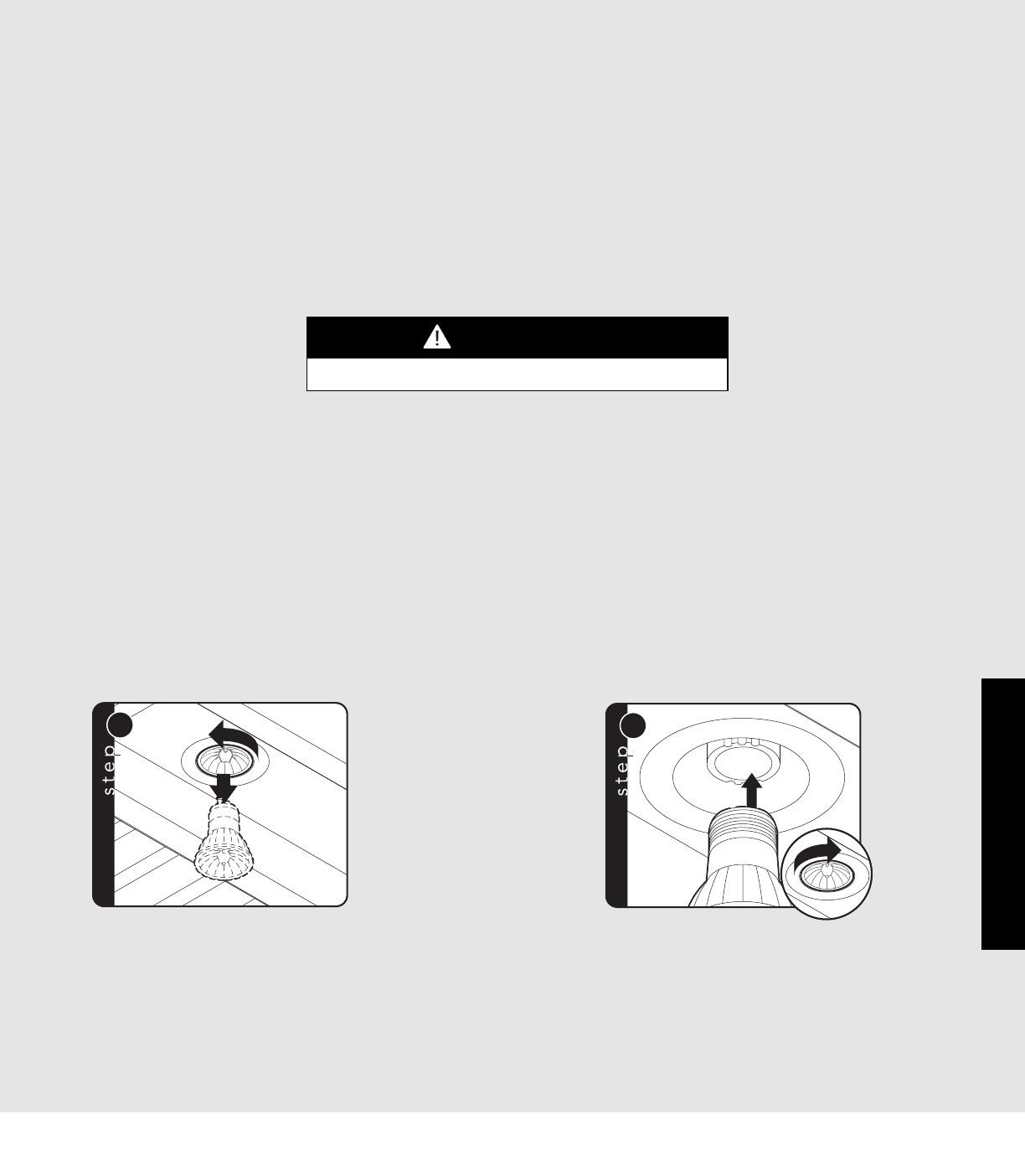
7
Product Care
Cleaning Hood Canopy
Finishes in enamel or stainless steel are highly resistant to damage or discoloration due to grease, steam, and heat—
provided that reasonable care is given to the equipment. The following suggestions will help keep your hood looking
new.
1. Do not allow an excessive accumulation of grease. For best results, you should wipe your hood clean with a cloth dipped
in warm, soapy water. DO NOT USE ABRASIVE CLEANSERS, STEEL WOOL PADS, OR ABRASIVE CLOTHS. DO
NOT use cleansers that contain chlorides; the chlorides in the cleaner could damage the stainless steel finish. If you need
to scrape stainless steel to remove encrusted materials, first soak the area with hot towels to loosen the material, then
use a wooden or nylon spatula or scraper. DO NOT use a metal knife, spatula, or any other metal tool to scrape stainless
steel.
2. Every 3 months give your hood a thorough cleaning. On painted surfaces, use a new coat of wax. A good wax
cleaner—available at either a grocery or hardware store—will do both jobs at once. On stainless steel surfaces, use
a good stainless steel cleaner and polish.
Renewing Enamel Finish
If discoloration occurs, you should thoroughly polish the finish on your hood to renew its gloss and luster and to
remove any grease residue which may have a yellowing effect. Use any good enamel polish, refrigerator polish, or
automotive polish.
Renewing Stainless Steel Finish
Regular cleaning is the best way to assure that your stainless steel finish stays bright and unscratched. Use lemon oil
or stainless steel polish to coat and protect stainless steel.
Replacing the Light Bulbs
When removing bulbs use an oven mitt to protect your hand in case the bulb breaks.
Halogen Lights
1. Unscrew halogen bulb.
2. Replace the bulb with a 120 volt, 50-watt halogen bulb.
CAUTION
Do not use a porcelain cleaner or rough abrasive cleaner.
Cleaning and Maintenance
1
2
1
1
2
2



